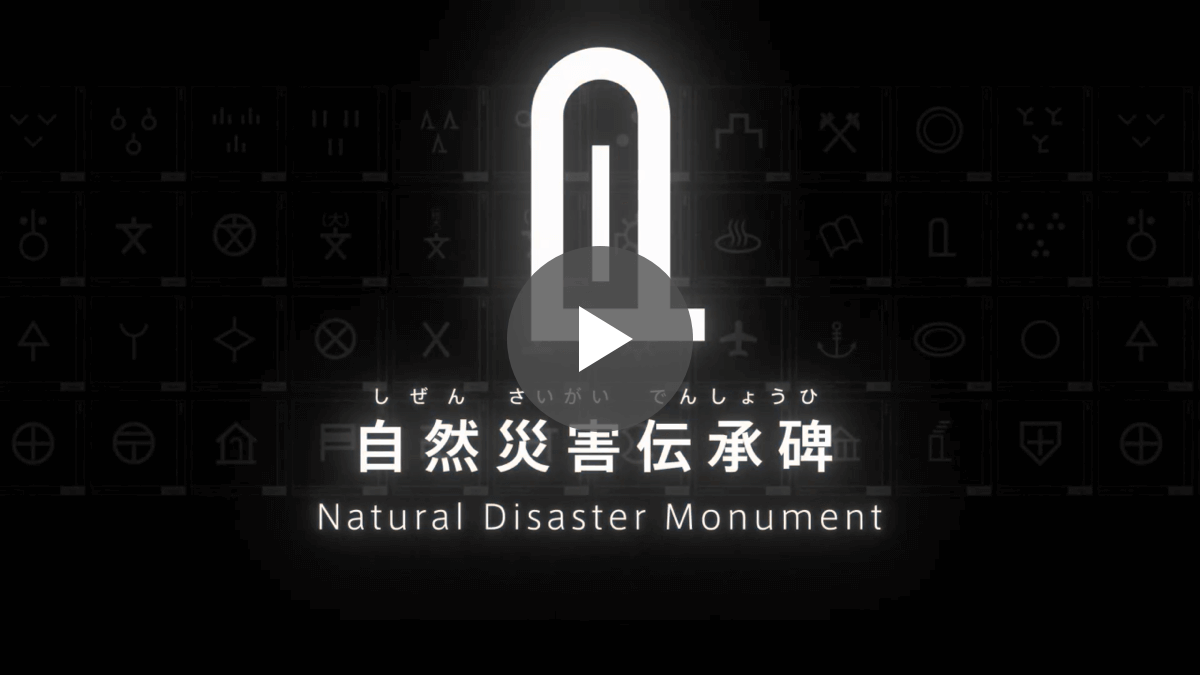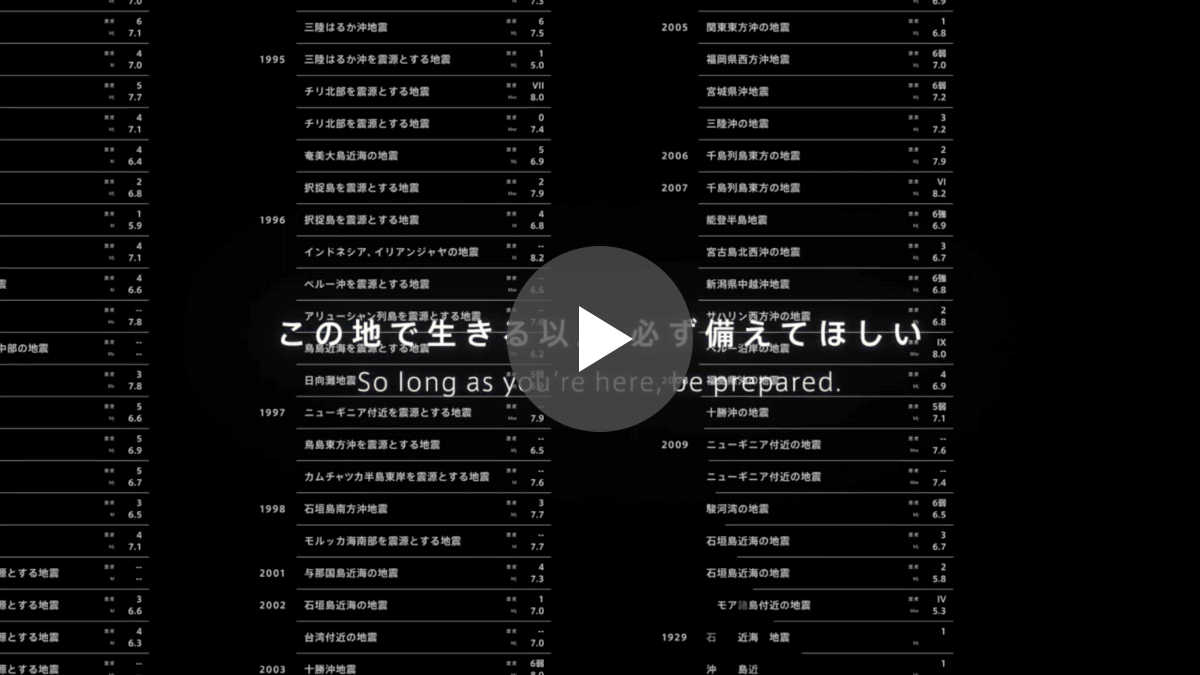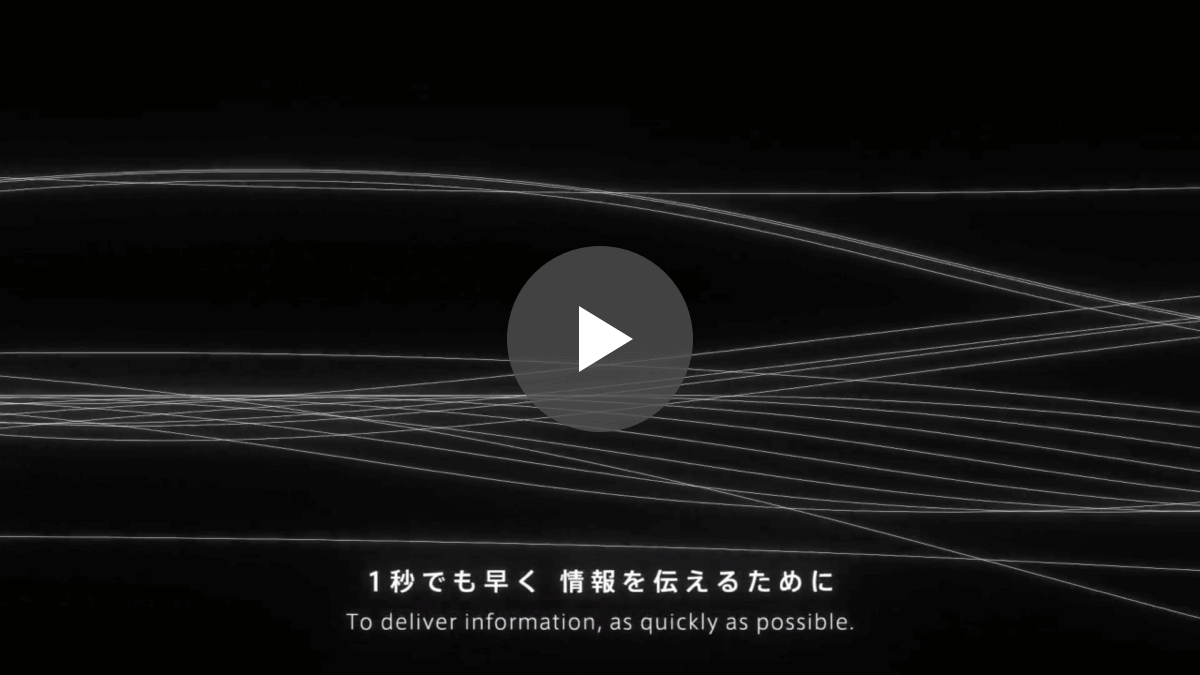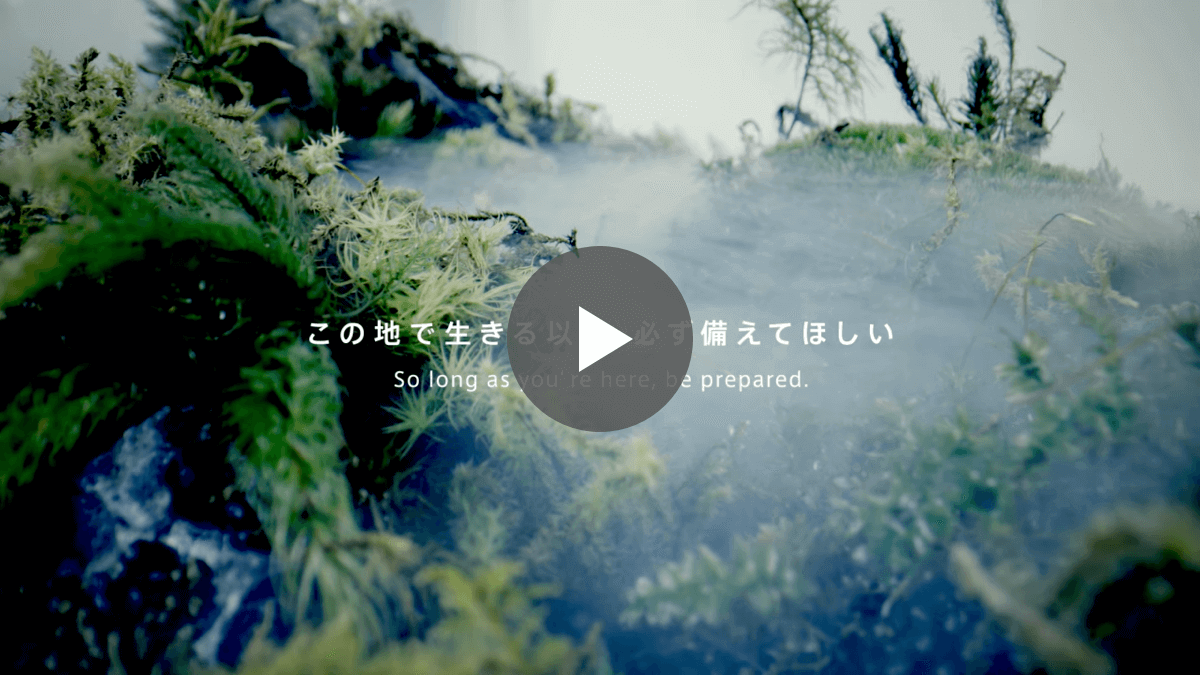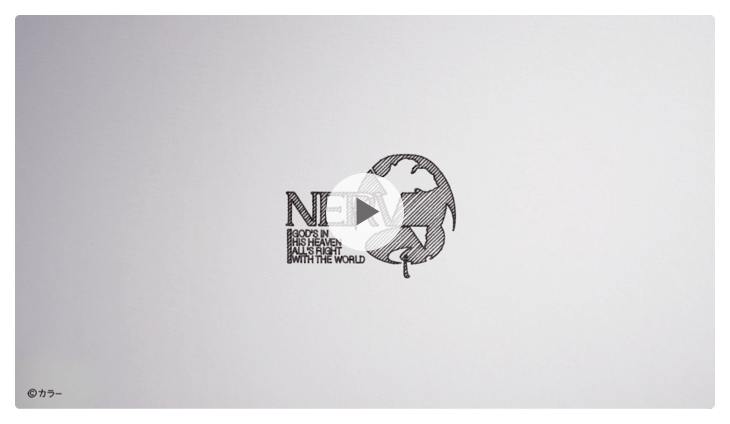One of the staples of Gehirn’s business is the provision of disaster information. We’ve been distributing disaster prevention information through our app, named “NERV Disaster Prevention”, and our Twitter accounts. However, memories of disasters tend to fade over time. As we have experienced many disasters, including the Great East Japan Earthquake, Gehirn has created a series of five works with the help of mimoid as a chance for each of us to ask ourselves what our duty is and what we should leave to the next generation.
What did Gehirn and mimoid think of each other, and how did they work together? We take a look back at the process of creating the works while respecting each company’s differing approaches.
A connection since middle school - between Gehirn and mimoid
Nukaya: I’d experiment with (what’s now known as) Flash Player in junior high and high school, and I knew Mr. Hosogane from around that time. About two years ago when I was looking for someone to make a video about Disaster Prevention for NERV, I came across mimoid’s reel on Twitter. I did a bit of research and found out that Mr. Hosogane was with mimoid, and I thought, “well, now I have to get in touch with them!”.
Sakai: When was mimoid founded?
Bessho: The company was founded in March 2020, but it didn’t really take off until around July. We were contacted by Gehirn just after we released the reel, and I remember thinking, “already?!”
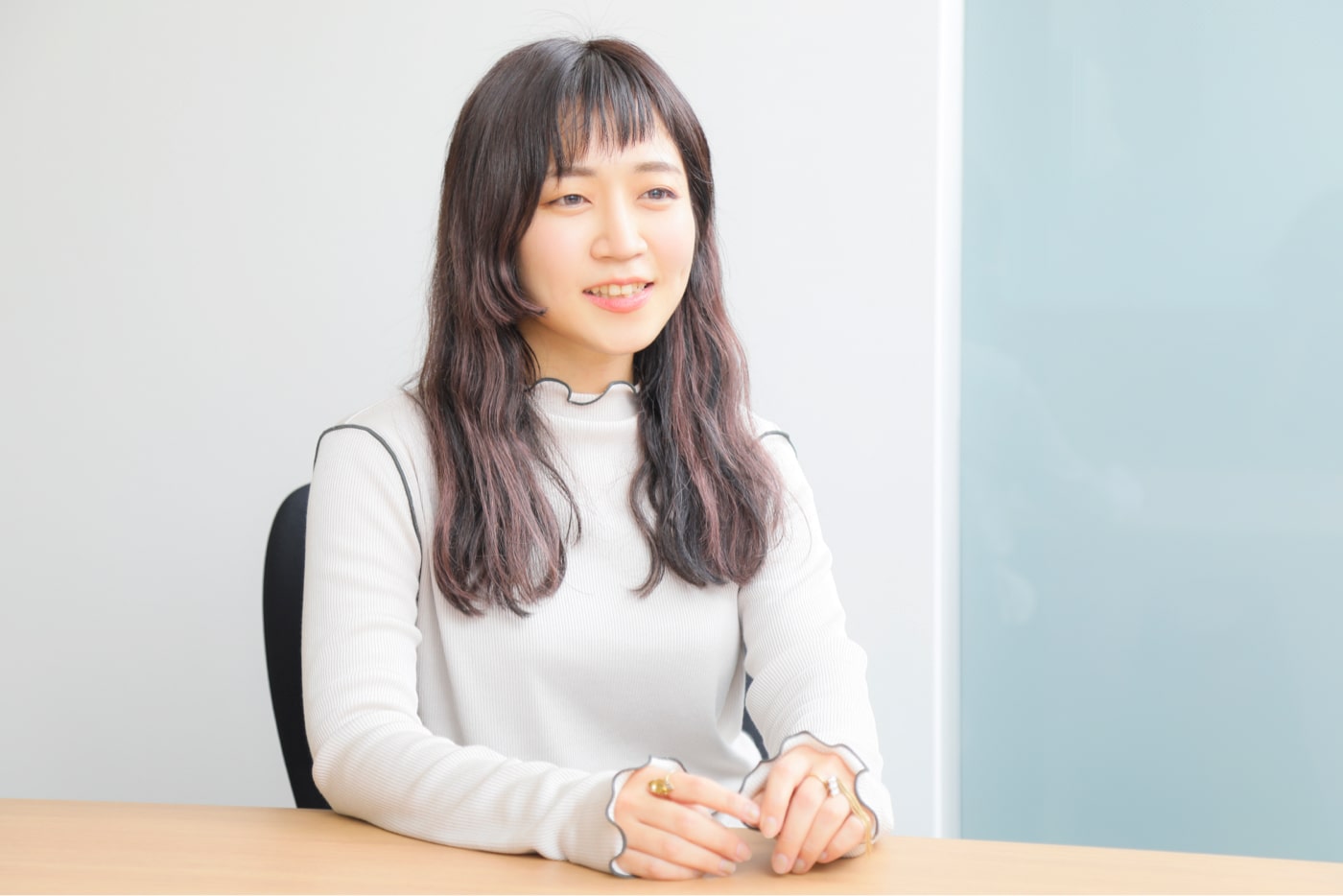
mimoid Producer Kozue Bessho
Sakai: What attracted you to mimoid’s content?
Nukaya: I'm not sure if this is the right way to say it but, their worldview is incredible! I’d been talking with Mr. Ishimori for a while about making a video for the NERV Disaster Prevention app and how I wanted to create a world that wasn’t just cool but also had a sense of reality, and I thought that mimoid would be able to achieve that.
Sakai: How did mimoid feel about receiving an enquiry from Gehirn?
Bessho: I actually already had the NERV Disaster Prevention app on my phone and was following them on Twitter as well, so I thought, “from them?!”
In the email I received, the basis of the project was laid out from the beginning, and I felt a strong desire to work with them. It was the first time for us to be contacted directly by a client, as we often receive requests through agencies and production companies. I was grateful that they had seen us and got in touch.
Sakai: What was the first meeting like?
Ishimori: Before we started, I thought, “What if they’re really difficult?”... I know it’s just an assumption, but I have this image of creators being hard to work with, so I was really nervous when I heard “based in Amsterdam” as well.
Hosogane: I’m so glad the barrier for entry is so low nowadays, but I was happy to be involved from the planning stage. In the case of a request through an agency, the client and the agency generally would have already discussed their plans for the work, and often there are constraints that we cannot change. For this project, it was nice to be able to start from a place where every detail was variable and could be negotiated.
Understanding each other’s philosophy through direct communication
Sakai: On the Gehirn side, we already had a concept of the kind of message we wanted to convey, but we also wanted to leave it up to mimoid’s expertise to a certain extent.
Ishimori: That’s right. We’re amateurs when it comes to video, so we wanted to put together a proposal that said, “this is a message of self-discipline to ourselves”, and then ask the professionals to make a commercial that would be widely understood. I also wanted it to be stylish and have a certain appeal. We didn’t want to just have a celebrity on the screen saying, “It’s great to be safe; download now!!”. We definitely didn’t want to do something like that.
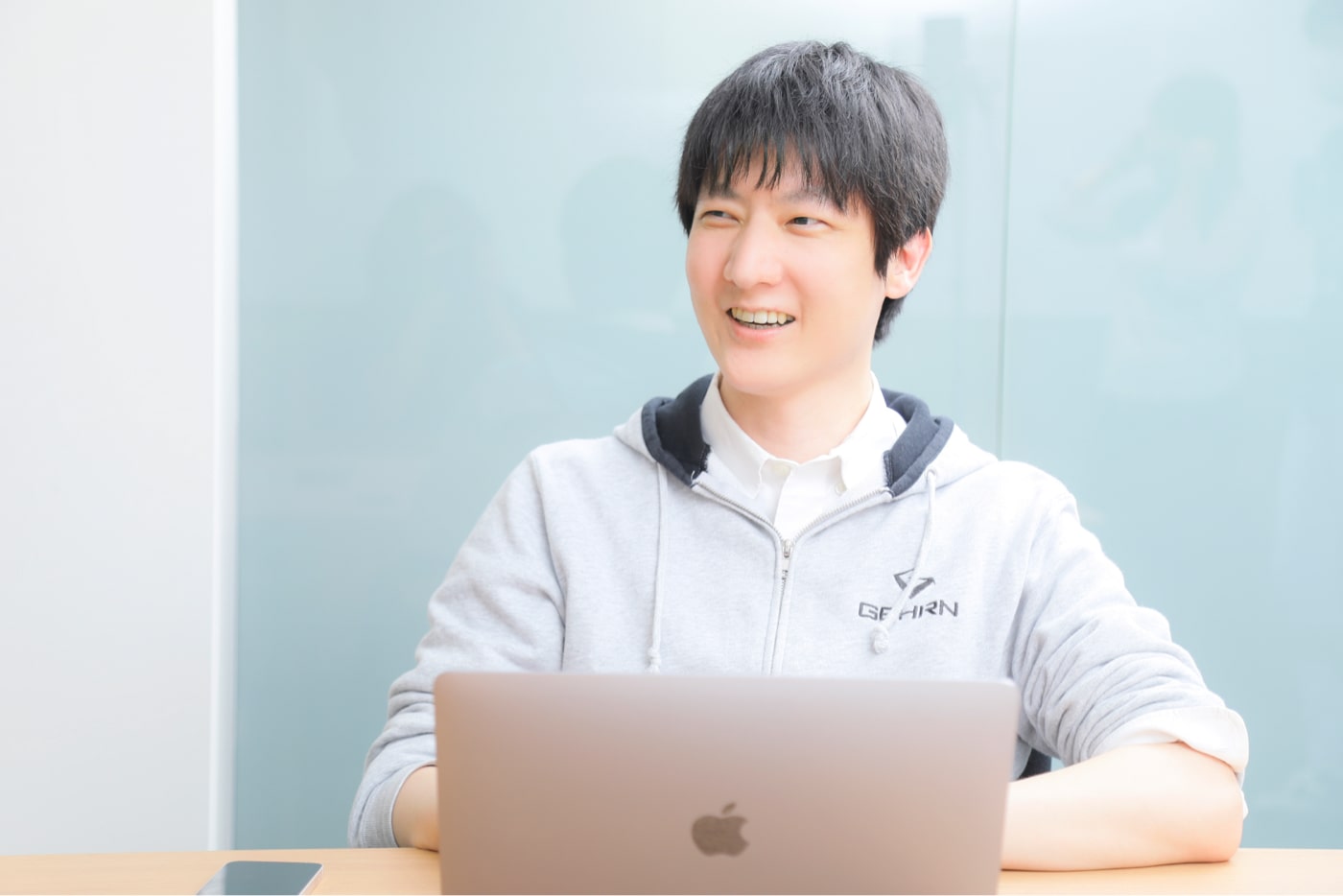
Gehirn Executive Director Daiki Ishimori
Bessho: I was buzzing when I received a document titled “Explanation of Concept.pdf”. When it comes to commercials, it’s easy to use catchy words, but in this project, Gehirn sincerely thought about the disasters and those affected, and they tried to convey their true feelings, even the less-pretty ones.
Sakai: Thanks to you, we went through various proposals based on a deep understanding of Gehirn. It was very impressive to see what happens when you go through such great creators.
Ishimori: However, I am sorry for all the trouble. At first, I told them that I wanted to make a commercial for the app, so in the first storyboards, they gave me an idea to make a flashy line of screenshots for the app. I thought it was a good idea, but then I realised that it wasn’t what I wanted to convey, so I sent them some conceptual material and they changed course. I think it took a lot of time and effort.
Bessho: Nevertheless, in the process of back and forth with Gehirn, we were able to get them to accept the challenge of how far we should go to realise the concept, and we were able to create the image freely, leaving room for imagination. We had a lot of fun doing this, and I feel that our trust in each other grew.
Sakai: What was the main reason why Gehirn, who is very particular, put so much trust in mimoid?
Nukaya: In the midst of our beliefs and conflicts, Mr. Hosogane did a lot of research and compiled a lot of conceptual material for us. When we looked at it, we realised that not only did they deeply care about the quality of the product, but also the philosophy that Mr. Hosogane and his team had was somehow in line with our own.
Ishimori: He took disasters and disaster prevention much more seriously than we did. On the contrary, he suggested to us that “this expression might not be acceptable in some cases” and explained it based on his philosophy. Before making the video, he would explain things to us that a typical agency or production company would have left out and started by organising everything into a neat, achievable timeline.
Bessho: The meeting with Gehirn was more of a discussion than a meeting.
Behind the scenes during production
Sakai: The theme of the series of commercials was to create an appeal for disaster prevention in a highly abstract way, without using realistic photos or imagery of disasters. For the first one, we used “Historical Monuments” as the motif.
Hosogane: It just happened to be a news article that left an impression on me when I was surfing the web. It just clicked naturally. In the end, I think it was a great fit. I like to read Wikipedia and such, so I try to do as much research as I can.
Sakai: You also understand the world of Evangelion, right?
Sugiyama: I’m from the generation that was directly targeted by Evangelion. In my first proposal, I tried to make the text Evangelion-style, but I was reminded that it wasn’t the feeling they wanted to convey. They didn’t want to make it look like a parody. I think that’s when we started to understand each other’s direction.
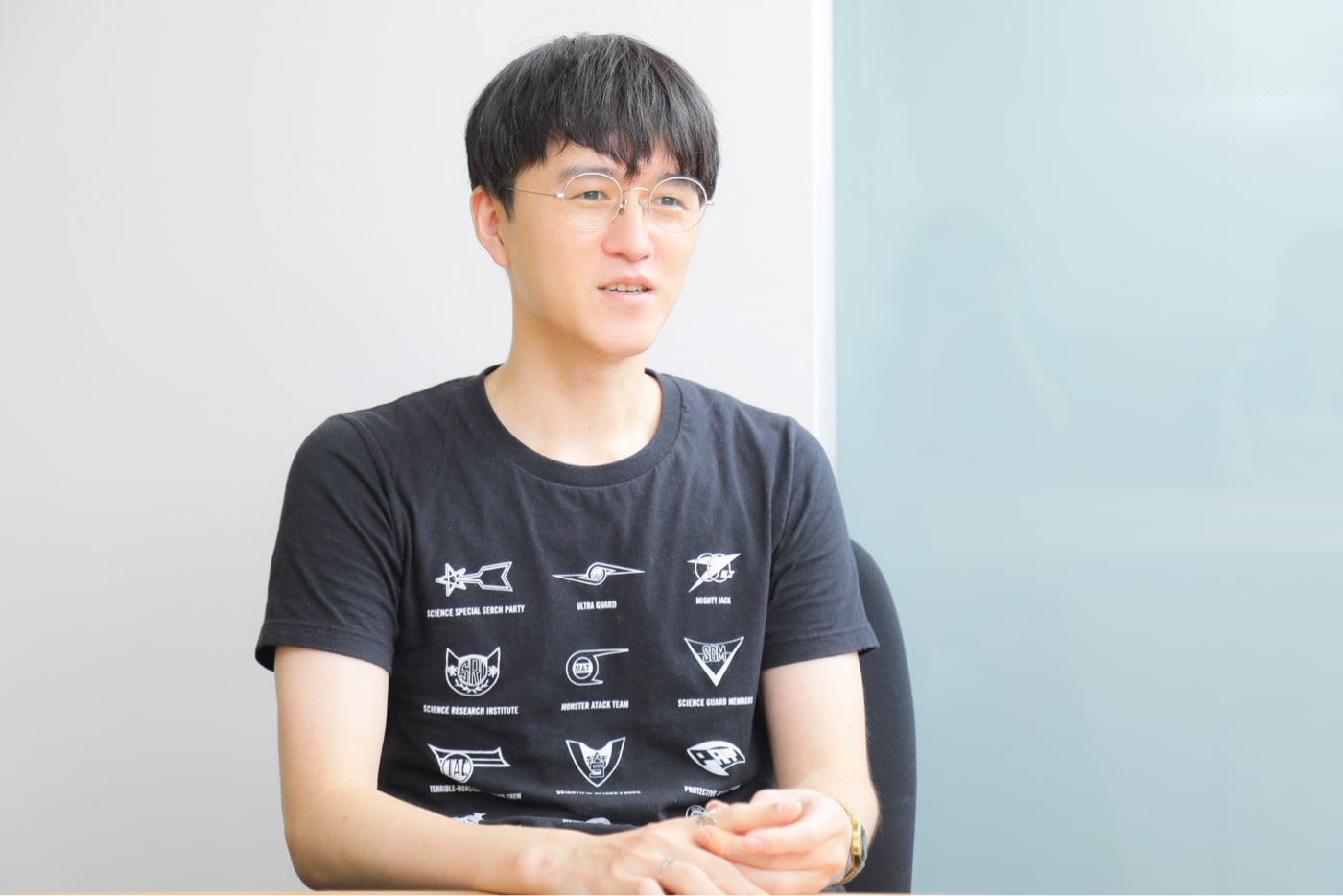
Graphic Designer/Art Director Shunsuke Sugiyama
Sakai: When you have an agency in between, information tends to get filtered, so I think it was great that we could chat directly with each other.
Sakuragi: Throughout the process, Mr. Ishimori began to gain complete trust in mimoid, so in the latter half of the project, the situation became more of a “do whatever Mr. Hosogane wants”.
Sakai: The second video was the “History of Tsunami” version. Instead of directly showing pictures of an actual tsunami, we only used text to convey the meaning of “there are multiple tsunamis every year”, which was a challenging idea.
Ishimori: First off, I wanted to tell people that “tsunamis happen every year” and that “we should live our lives with the assumption that there will be a tsunami this year and most years after”. I sent it to mimoid, and they came back with a concept and said, “Is this what you mean?”
Sakai: How did you come up with that presentation?
Sugiyama: I tried to make it look like data, but not too much like data. I still wanted it to look cool, you know? However, I’m not the kind of person who easily comes up with ideas, so I had to try them out logically. I’d come up with something, show it to them, make some changes, and then repeat the process until everyone was happy.
Sakai: Is Mr. Hosogane the kind of person who comes up with the ideas?
Hosogane: I don’t think I’m that type of person, really. When I was thinking about it, I had a vague idea of expressions that were not appropriate. For example, when I see an emotional situation such as a baby and an old lady holding hands, I try to avoid it because it is often too close to “warmth”, and instead, it makes me feel cold. That’s why I thought it would suit Gehirn’s style of “confront disasters with data” if we didn’t rely too much on emotional images for the graphics.
Sakai: The third film is about the Great Hanshin-Awaji Earthquake, and the fourth is about “moss”. Why did you decide to make a film with moss?
Hosogane: I believe that moss is a symbol of the passage of time. We have a saying in Japan: “until the moss grows”. I was looking for a motif that could express the passage of time in a straightforward way, and moss was the one that just felt right.
Sakai: I think there were also motifs like “a clock”...?
Hosogane: All clocks move forward in the same way, but moss grows differently depending on various conditions. If you look at some of the stories from victims of the earthquake, you’ll see some people that say, “this isn’t the end”, while others say, “I wish I could forget already”. I wanted to express this nuance.
Ishimori: When they proposed the idea to use moss, I just couldn’t visualise it at all. I wondered if it would be ok to just go with it… (laughs)
Nukaya: In the end, we decided to leave it up to Mr. Hosogane.
Ishimori: I guess there was also the expectation that I wanted to see something I’d never seen before.
Sakai: And you grew the moss yourself, didn’t you?
Bessho: I tended to it myself. I misted it once a week and asked advice from a friend who knows a lot about aquariums, and even talked to a moss expert. I grew it while recreating an ecosystem that could exist in the real world. I also wanted to express that it was a “fake forest” to some extent so that it wouldn’t look too much like an actual forest.
Sakuragi: Using fog also really added to the atmosphere.
Bessho: At first, we used a smoke machine to make the fog, but I think it was too weak, so we ended up using the dry ice that we bought as a backup. In the end, I think it was a bit too strong though.
Nukaya: The visuals, music and narration all really came together in the end.
Ishimori: We asked the voice actor Koichi Yamadera to do the narration. I asked him specifically as he’s a voice actor from Miyagi Prefecture, and he’s been involved in various charity activities following the Great East Japan Earthquake. He also voiced a character in Evangelion, so it was only natural.
Bessho: At first, I was reluctant to do it. I was concerned that Mr. Yamadera’s voice would carry too much emotion and that it would come across as fictional. Looking back at it now, I think it was really rude of me as a professional to have such thoughts…
Sakai: A typical creator would probably think the opposite. I thought it was great that mimoid went back to the basics of the project and thought about what Gehirn was aiming for.
Bessho: From a short-term perspective, there may be a disadvantage to not being able to get a lot of views on this project, but I think, as we’ve discussed multiple times, that it’s more important for Gehirn to establish this branding in the long term.
Sakai: How was the recording process?
Ishimori: Mr. Yamadera was great, even from the first take. However, at first, he spoke rather cheerfully since we told him it was for a commercial, so I asked him to make it a bit darker, and that’s when we ended up with the current narration. I thought it was unreasonable to ask such a thing of someone like Mr. Yamadera, so it was hard for me.
Sakai: After that, you produced a new video in collaboration with Mitsubishi Motors as a fifth video. Who came up with that idea?
Bessho: Mr. Hosogane had been working on the idea as a draft, and we ended up trying to match it to the concept of this project.
Ishimori: At first, we thought about filming the stone monument “Jikūshō” on Okushiri Island, but we couldn’t go due to a typhoon. After that, we came up with the idea of filming using a diorama of that location, but we couldn’t get permission to film it, so we had to give up on that idea. After that, mimoid came up with the plan of “drawing with a pen plotter”.
Hosogane: I'd used a pen plotter in another project just before this one, but I still felt it was worth exploring for this project as well. The main reason was that I thought the human-like quality of using pen on paper went well with the data that was at the heart of Gehirn’s vision.
Sakai: When we first shared this idea internally on Slack, everyone was very excited.
Ishimori: It’s fun, it’s beautiful, it’s picturesque… I think it was then that I understood that when mimoid is involved, the outcome would always be beautiful.
Sakai: I heard that some strange phenomena occurred while shooting?
Hosogane: Pen Plotter data is drawn based on an SVG format, so it’s not that we calculate the route that the plotter takes when drawing; the plotter just draws the image based on whichever data comes first. There was a time when we were testing, and the plotter was drawing the NERV logo, and the word “GOD” appeared… It was very ominous.
Bessho: I was horrified when they sent it to me at 2 am. I thought it was the will of SEELE. (laughs)
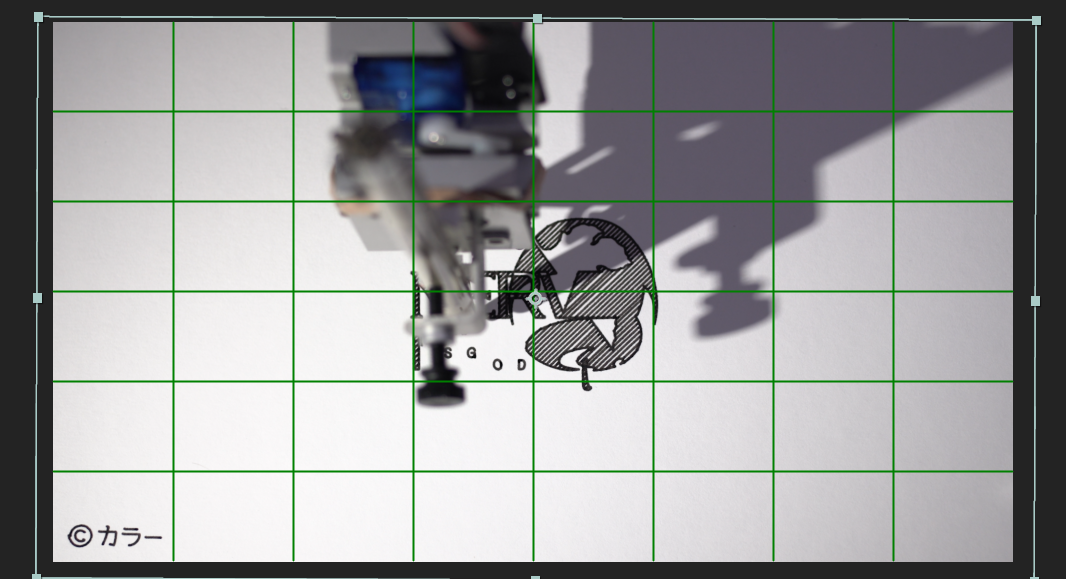
The word "GOD" appears
Sakai: For the fifth video, we decided to co-produce it with Mitsubishi Motors, rather than Gehirn alone. However, the initial idea was a very standard commercial-like video, which was different from the kind of view that Gehirn and mimoid had created until then. So there were some exchanges where you had to deny the sponsor’s intentions altogether…
Ishimori: They asked us to say “Mitsubishi PHEV”, but there wasn’t much overlap between that and the story we wanted to tell about the disaster response vehicle. In the first draft we received from them, they had “Mitsubishi” mentioned in every line.
I sent a bold email to the person in charge at Mitsubishi Motors, saying that if we used Mitsubishi as the subject, the audience might think of us (Gehirn) as someone else, and that they would not be able to relate to us. We thought it would be more progressive to express the world view of PHEVs instead of repeating the phrase “Mitsubishi PHEV” and clinging to that single concept.
Sakai: What’s amazing about Mitsubishi Motors is that they accepted the email and changed course.
Ishimori: I think I was able to convince them because I had built up a good relationship with the person in charge at Mitsubishi over the years, so I knew that they would take it positively.
Sakai: But in the meantime, the production was delayed again and again. I was worried that we were forcing them to do unreasonable things with short deadlines every time.
Bessho: It took us two or three weeks from the time we decided to use the pen plotter to the time of delivery for the work. After we decided to do it, we just did what we had to do. What was good about working with Gehirn again on this project was that we already had a good understanding of each other, so there was no one saying “that’s not what we wanted” when we’d show them progress. The most challenging thing is to start a project and then turn it upside down and go in a different direction. Because we also communicate directly with each other, I was really encouraged and helped by the excited emails I received when I sent the completed video.
Sakuragi: Whenever progress was posted in Slack, it was over for me. I couldn’t express myself in words, and all I could say was “oh my gosh!!” and “wow!!”...

Gehirn Design & Production Division Hanna Sakuragi
Ishimori: Normally, I’d just respond with a generic “yup, got it!”, but every time I’d receive a file from mimoid, I’d check it on my phone, my computer, or on my big TV at home and every time I looked at it, I was like “wow… that’s amazing”.
Bessho: You could really feel their reaction, so it felt very rewarding.
Sakai: There were many times when I’d felt like I was asking an impossible question…
Bessho: In that sense, Mr. Hosogane is the type of person who is always looking for ways to poke holes in the rules, so the tighter the rules are, the more he burns. Besides, I have never felt that I was forced to do something too difficult…
Hosogane: Our definition of an unreasonable challenge would be a challenge that contradicts what you want to do, and what you say you want to do. As long as the two are in agreement, difficulties in implementation are not really an unreasonable challenge for us.
Bessho: We didn’t feel that we were being asked to do anything unreasonable because we’re consistent in our approach, plus there is room for dialogue and we get feedback on our suggestions.
A great response, and a video that reminds us of our origins
Sakai: The commercials were shown in some cinemas as pre-roll ads during viewings of Evangelion: 3.0+1.0 Thrice Upon a Time, which was released in March 2021. How did you feel when your commercials were shown in cinemas?
Ishimori: It was definitely a lot to think about. I was told that it would be the very last ad, right before the movie started, so as each commercial appeared, I kept thinking “next one… next one…”, but then I heard Mr. Yamadera’s voice appear and thought it was a miracle that it managed to be shown before the movie. For Evangelion movies 1.0, 2.0 and 3.0, I’d only watched as a regular person. But ten years later, I was able to be involved with Evangelion in 2019 with Operation 0706, this series of commercials, pamphlets, and many other projects, so it’s absolutely been a dream.
Bessho: Actually, I went to a non-participating cinema when I went to see the film, so after every commercial that played, my thoughts were “It’s not coming?? It’s not coming…”, so I never got to see it on the big screen.
Sugiyama: I got to see it! It came on at the end of the commercials right when the lights had already started to dim, so I’m sure the audience was a bit surprised when Mr. Yamadera’s voice suddenly appeared. I wonder if the audience thought it was part of the film.
Nukaya: I heard some people behind me say, “It’s NERV!”. Behind the scenes, there was a client who saw the commercial and wanted to ask us to do a project for him. He said, “I was so impressed by the commercial, I wanted to work with Gehirn at any cost.”
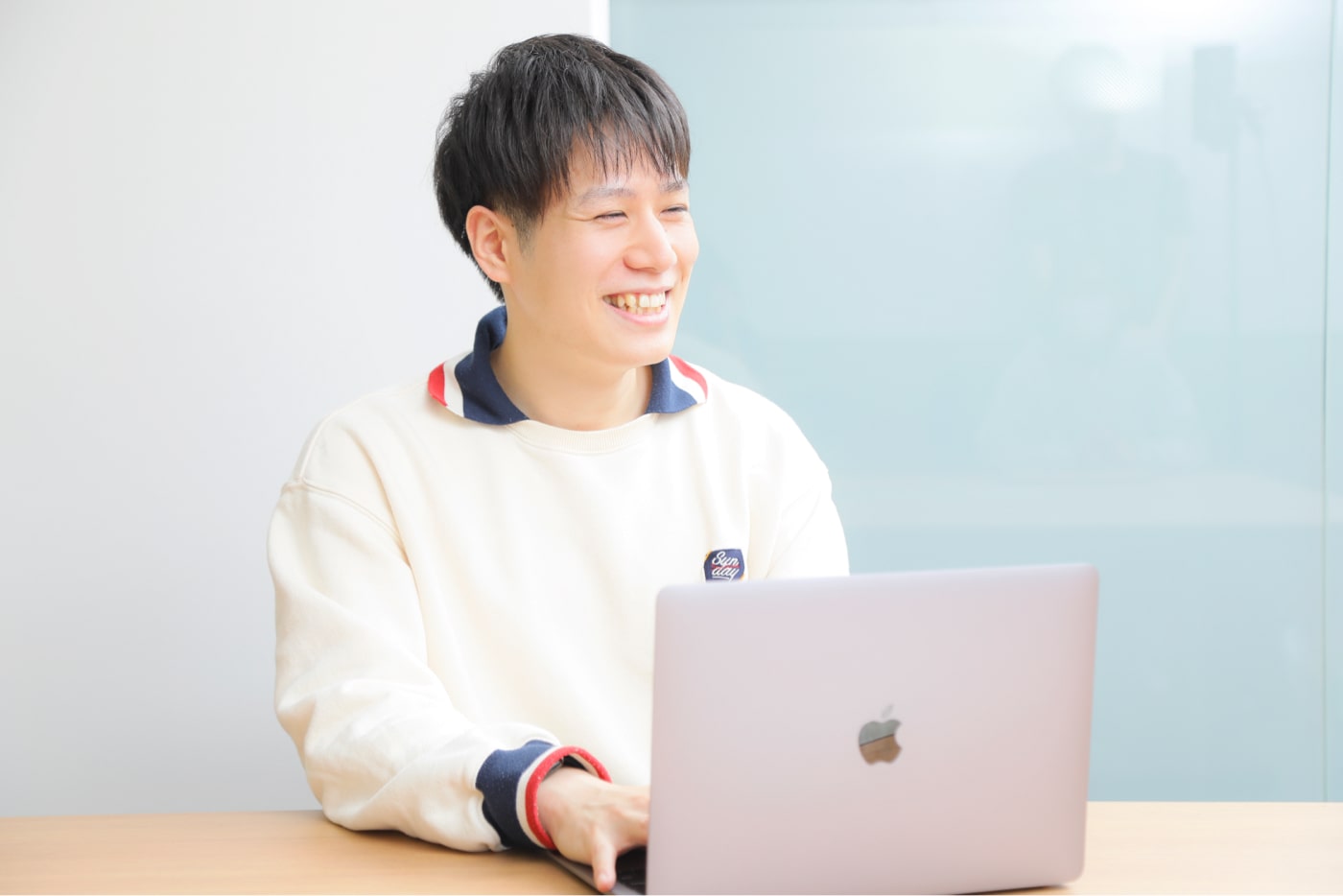
Gehirn Managing Director Takashi Nukaya
Sakuragi: Some people have even applied for employment after seeing it. It’s really had a great effect.
Ishimori: I think I’m probably the one who is most affected by the videos… The fourth one, “Our Duty”, was more of a self-discipline message to myself. I’ve watched it over and over again... I really think it's a video that confirms what we have to do and what our goal is for the app.
Sakai: Finally, is there anything that Gehirn would like to say to mimoid?
Ishimori: After this interview goes out, I think we’ll be in trouble if everyone finds out how great mimoid is. They’ll be too busy to take our requests!
Nukaya: I was already satisfied when mimoid accepted our commission… It’s a bit strange because Gehirn is also a company made up of people I met on the internet. I’m glad I also got to work with Mr. Hosogane and his team and that I learned Flash all those years ago…
